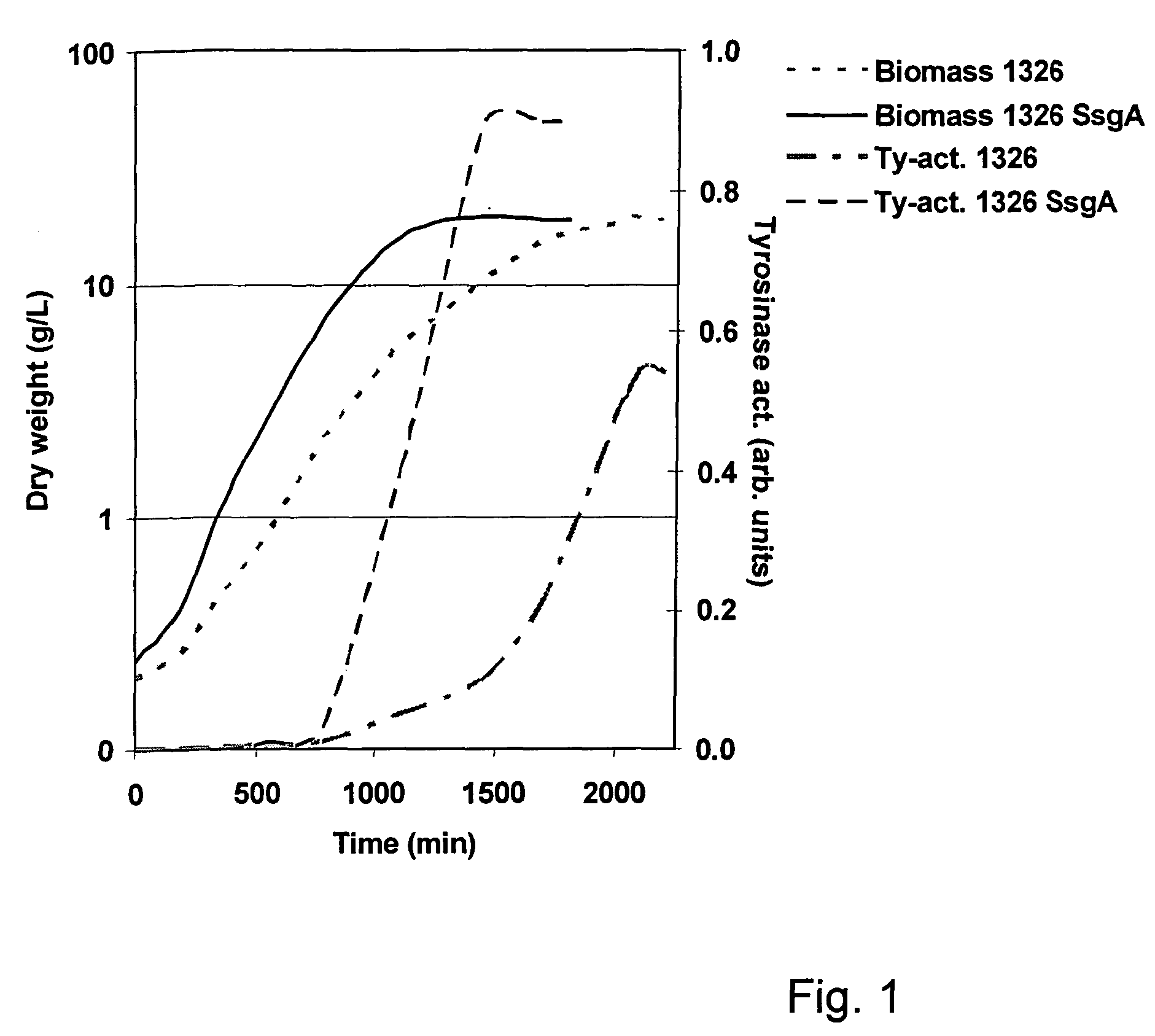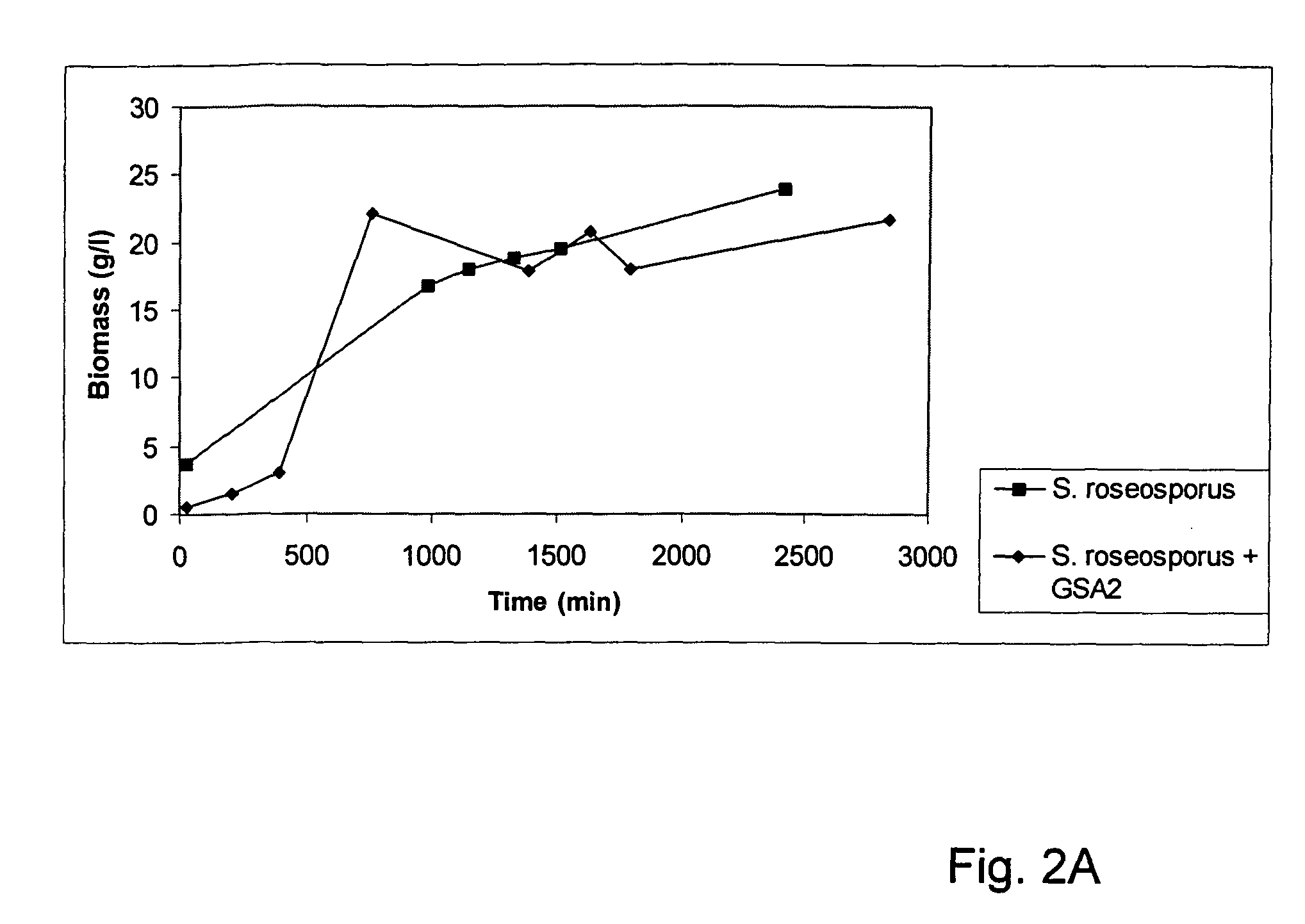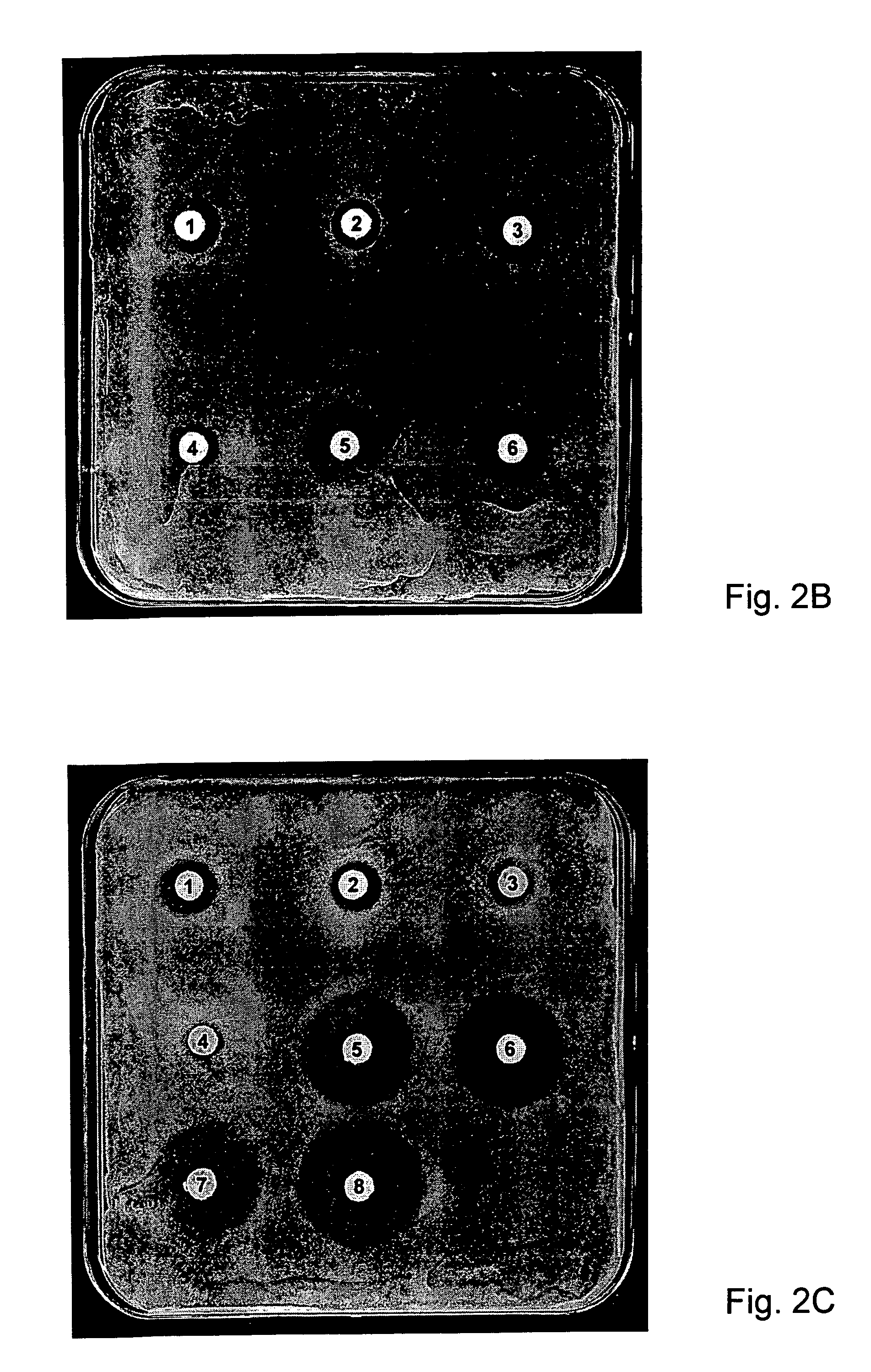Growth characteristics of filamentous microorganisms
a technology of filamentous microorganisms and growth characteristics, which is applied in the field of industrial microbiology, can solve the problems of reduced growth rate, low biomass accumulation, and low yield of desired product per unit of biomass
- Summary
- Abstract
- Description
- Claims
- Application Information
AI Technical Summary
Benefits of technology
Problems solved by technology
Method used
Image
Examples
Embodiment Construction
Experimental Part
Materials and Methods
Bacterial Strains and Culturing Conditions
[0144]The bacterial strains used in this application are listed in Table 1.
[0145]
TABLE 1Bacterial strains described in this patent application.Bacterial strainGenotypeReferenceS. coelicolor M145wild-type, SCP1−,Kieser et al., 2000SCP2−S. lividans 1326Wild-typeKieser et al., 2000S. avermitiliswild-typeATCC 31267S. roseosporuswild-typeATCC 31568Sacch. erythraeawild-typeATCC 11635GSA3M145 ΔssgAVan Wezel et al., 2000cGSB1M145 ΔssgBThis patent applicationGSR1M145 ΔssgRThis patent applicationJ1915M145 ΔglkAKelemen et al., 1995M510Ml45 ΔredDFloriano and Bibb, 1996M511M145 ΔactII-ORF4Floriano and Bibb, 1996M512M145 ΔactII-ORF4Floriano and Bibb, 1996ΔredDM512 DogRM512 ΔglkAThis patent applicationM550Ml45 ΔredZWhite and Bibb, 1997.M513M145 ΔafsRFloriano and Bibb, 1996M513supM513 over-producingThis patent applicationantibioticsM541M145 ΔmalRvan Wezel et al., 1997E. coli JM109See referenceMessing et al., 1981
[0146]E...
PUM
| Property | Measurement | Unit |
|---|---|---|
| volumes | aaaaa | aaaaa |
| size | aaaaa | aaaaa |
| pH | aaaaa | aaaaa |
Abstract
Description
Claims
Application Information
 Login to View More
Login to View More - R&D
- Intellectual Property
- Life Sciences
- Materials
- Tech Scout
- Unparalleled Data Quality
- Higher Quality Content
- 60% Fewer Hallucinations
Browse by: Latest US Patents, China's latest patents, Technical Efficacy Thesaurus, Application Domain, Technology Topic, Popular Technical Reports.
© 2025 PatSnap. All rights reserved.Legal|Privacy policy|Modern Slavery Act Transparency Statement|Sitemap|About US| Contact US: help@patsnap.com



